The pursuit of beauty and the relentless quest to look younger is nothing new and has probably been around since the first human looked into a pool of water and realized that the disfigured beastly thing staring back was themselves. A couple of hundred thousand years and many medical technology breakthroughs later, we are spending massive amounts of money, time and pain on that quest to look younger and more beautiful. And last week a Japanese cosmetic company made an announcement that seemed to suggest they found the fountain of youth when they took 30 years off a 67-year-old man’s skin using a breakthrough technology.
science (Page 12)
When I first moved to Japan in college, every weekend meant a party and a new group of people to meet, with a standard set of questions I got asked. The logic behind “What’s your name?” was obvious, and “Where are you from?” also makes sense when you’re one of the few non-Japanese people in the room. “Do you like Japanese girls?” was another common one, based on the widely held, if not always true, theory that foreign guys like Japanese women, and vice-versa.
Those three always came first, but it wasn’t long until someone would want to know my blood type. No, my school wasn’t filled with vampires or hemophiliacs, nor hemophiliac vampires (the most tragic undead demographic). People just wanted to get a sneak peak at my personality, which is thought to be strongly connected to what runs through your veins by many people in Japan.
One man who’s not a believer, though, is Professor Kengo Nawata from Kyushu University’s Social Psychology Department, whose recently concluded research shows no correlation between personality and blood type.
Wednesday has to be the least exciting day of the week. Your energy boost from the weekend is likely spent, and you’ve still got a couple more days of work until your next chance to cut loose and have some fun.
At least, that’s how things generally are. This week, we’re psyched about Wednesday, because October 8 is bringing a lunar eclipse to Japan, and as part of the celestial show, the moon is turning red.
Dry ice is some pretty handy stuff. Aside from keeping shipments of groceries and other perishables nice and cold, it’s perfect for producing billowing smoke, which is always nice to have if you’re throwing a high school dance.
Dry ice doesn’t just have the power to compel teens to shake their bodies, though, but coins and spoons too, as shown in these awesome videos.
You have to feel sorry for the uglier animals of this world. While kittens and bunnies inspire a universal chorus of “awwwwwww”, if you’re unlucky enough to be born a crustacean or insect, chances are people don’t think you’re so cute.
The Japanese spiny lobster, or Ise-ebi, is a bumpy, spooky-looking creature at the best of times. This one, which was caught off Tōshi-jima in Ise Bay this week, is a gynandromorph – one side of its body is male, the other half is female. Mainichi Shimbun reports that the creature is truly one in a million!
They feature so prominently in our Saturday morning cartoons and Charlie Chaplin movies that mankind has simply taken it as gospel that stepping on a banana peel will cause you to comically slip and fall with such a force that birds and stars will circle your head.
But did you know that until recently this was only a theory, unproven by a peer-reviewed scientific study? Thanks to the hard work done by Kiyoshi Mabuchi and his team at Kitasato University who were able to apply a frictional coefficient, we can unequivocally say that banana peels really are slippery when you step on them. Little wonder the group was awarded the 2014 Ig Nobel Prize in Physics.
When a 4-year-old tells you his favorite hobby is riding dinosaurs with laser guns on their backs, you’d probably tend to laugh it off as the whimsical musings of a person whose brain hasn’t fully developed yet. But apparently one Japanese researcher thought taking the nonsensical ramblings of very young children seriously was an important research project lending insight into the pre-conception brains of recently born people.
“Doctor” Akira Ikegawa – who is crazy and is possibly also hoping to defraud at least a few people – says his research in prenatal care has revealed that babies sit up in clouds looking down on the world picking and choosing which mother they prefer to be born to before spiriting themselves into those mothers’ wombs to be carried to term.
The Nagoya City Science Museum, being located in one of the busiest urban centers of Japan, gets most of its visitors arriving by public transportation. Without a car to store their stuff in, most of them are carrying some sort of bag with their personal belongings, plus, in the case of tourists from out of town, any souvenirs they’ve been buying while in the country’s fourth-largest city.
For those who don’t feel like lugging their things around inside the museum, there’s a bank of lockers. Of course, a drab wall of solid gray metal wouldn’t be very visually appealing. At many other tourist attractions in Japan, you’d see a brightly colored mural featuring some local mascot character, but the designers at the Science System went with something a lot more original and appropriate by plastering the chemical symbols of the elements on them.
One netizen in Japan created quite a pickle recently, after posting these photos online in an internet chat forum. The accompanying thread, titled “the pickled cucumbers my mum made are glowing in the dark”, caught the attention of hundreds of users, who began discussing possible causes for the mysterious luminescence. Speculation ranged from light-hearted banter, questioning whether the dawn of cognitive vegetables had finally arrived, to more serious concerns about radiation. What do you think caused the unique phenomenon?
Who would win in a fight between a Titan and Ultraman? How were the Walls built? Seeing as Titans never eat or drink, are they surviving through photosynthesis? If these are the questions that keep you awake at night, then we’ve got some bedtime reading for you.
Kūsō Kagaku Dokuhon (空想科学読本, literally “fantasy science reader”) is a series that addresses, queries and explains the science behind popular Japanese anime and manga. This time around, writer Rikao Yanagita has turned his hand to the inescapable Attack on Titan series, in this 208-page illustrated work that promises to answer all your titanic scientific ponderings.
Although the spiny, horrifying outside may scare you off, the insides of a sea urchin are one of the most delicious things to come out of the ocean. In Japan, sea urchin, or uni in Japanese, can be enjoyed with sushi, on top of rice or just own its own. Sea urchins are a treat for any seafood fan, but recently a group of Japanese netizens found out a little bit more about the life of the sea creature and began a deep discussion about the spiny little critters.
Everybody, go ahead and cross your arms right now. Done? Alright. Now, try to cross them the other way. If you’re currently crossed with right forearm on top, try to switch position so that your left forearm is on top. Feels incredibly awkward and unnatural, doesn’t it?
It turns out most people have a natural bias for arm-crossing direction, with slightly more than half of most global populations preferring the left-forearm-on-top approach, although the two preferences are basically 50-50. Some people apparently cross their arms either way without even thinking about it, although this population is exceedingly small.
So why do we humans find one way so natural and the other way so incredibly weird-feeling? It may have something to do with your psychological composition, according to the (admittedly somewhat unreliable) Japanese Internet.
It’s 1987. You’re looking awesome in your oversized Michael Jackson “Bad” t-shirt as you slot a chunky, grey game cartridge into your NES console. But instead of the Super Mario Bros./Duck Hunt title screen, all you see is a jumbled-up mess of an image that looks like an 8-bit Picasso. What do you do? The same thing everyone did – you take the game cartridge out, blow into it, and put it back in. Lo, and behold: this time the game loads perfectly and you can squish goombas or shoot ducks to your heart’s content.
But in the pre-internet age, how did we all “know” to blow into cartridges? And like rubbing the magnetic strip on a credit card or shaking a Polaroid photo, why did we keep doing it even when product manufacturers and scientists insisted that it didn’t work and could actually cause damage? Joe Hanson, biologist and author of the popular science blog It’s Okay To Be Smart, offers up some answers in a neat YouTube video asking just that.
Tokyo Disneyland and Disney Sea can both make pretty strong claims for the “Happiest Place on Earth” title. Combining the cast of the animation pioneer’s collected works with Japanese sensibilities results in some of the most unbridled and deep-rooted enthusiasm for cartoon characters you’re likely to find anywhere. Adding to the experience is the attention to detail and hospitality that comes from the world’s preeminent amusement park operator and the country with the highest customer service standards on the planet.
But while all those things go a long way towards helping visitors enjoy their stay, the excitement they bring just might pale in comparison to the joy guests feel when they realize there’s something Japan’s Disney theme parks don’t have: mosquitos.
I always feel a little sad whenever I stop and think that NASA’s Space Shuttles are no longer in service. For decades, they served as symbols not only for the pioneering spirit of their mission crews, but for NASA itself, an organization that serves as a gathering point for some of the brightest and boldest scientific minds on the planet.
NASA hasn’t completely gotten out of the high-tech transportation field, though, as it’s moving ahead with a project to develop a supersonic passenger jet. As impressive as its specs are, though, it looks like something quite a bit more down to earth: a root vegetable.
Le sigh… Sorry guys, it’s time for yet another South Korean tale of cosmetic surgery woes. I know I write way too much about South Korea’s penchant for cosmetic surgery and how things can turn towards the uncanny valley a little too quickly. I know you guys wish I’d just get off the topic because it’s depressing.
Wait… What? WAIT WHAT?! There’s a person who got serious cosmetic surgery and it actually worked out really well?!
Japan has sort of a love-hate relationship with bugs. On one hand, there’s a trio of insects that are seen as nostalgic symbols of summer. Dragonflies are a popular motif on yukata summer kimono, the whining of cicadas is an immediate audio cue that brings back memories of the lazy days of summer vacation, and catching stag beetles has been a popular pastime during the warmer months for generations of Japanese kids.
On the other hand, cockroaches are universally hated, because, well, they’re cockroaches.
With such strongly contrasting emotions involved, it’s understandable that rumors persist of a cockroach/stag beetle hybrid, something which caught the nation’s attention again recently after someone in Japan claimed to have caught one.
In North Korea‘s latest desperate attempt for attention from the rest of the civilized world, the dictatorship – perhaps tired of tossing missiles around for now – bragged through state media that its scientists have discovered a way to extract enzymes from a certain mushroom grown in the region to create a miracle super drink that makes athletes better, faster and stronger.
Some Japanese Twitter users posted photos of a spherical double rainbow spotted in Ishikawa Prefecture a few days ago, and thank God they weren’t high, because if outdated Internet meme “Double Rainbow Guy” is any indication, it would have literally destroyed their minds with its brilliance.
While Double Rainbow Guy seemed to think his double rainbow sighting was a sign that we aren’t alone in the universe or something, most Japanese Netizens who posted photos seemed to just take it as a sign of good luck, even though this double rainbow is way more awesome because it forms a circle around the sun as though Helios himself were gifting humanity with two giant cosmic frisbees.

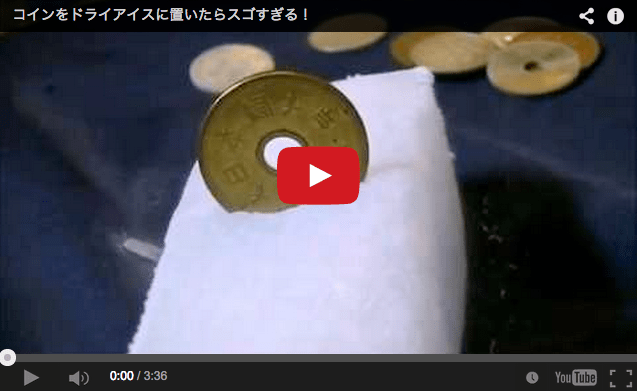
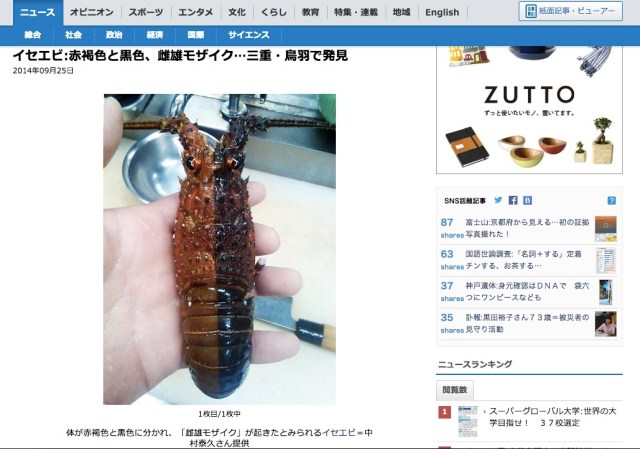
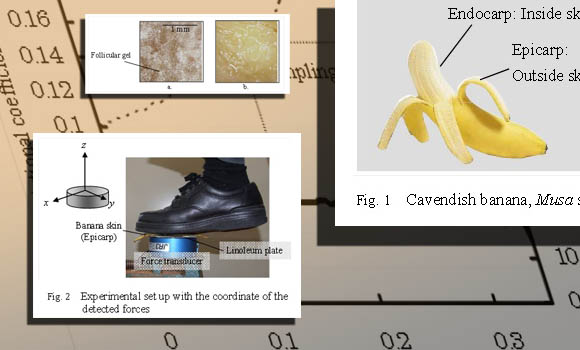

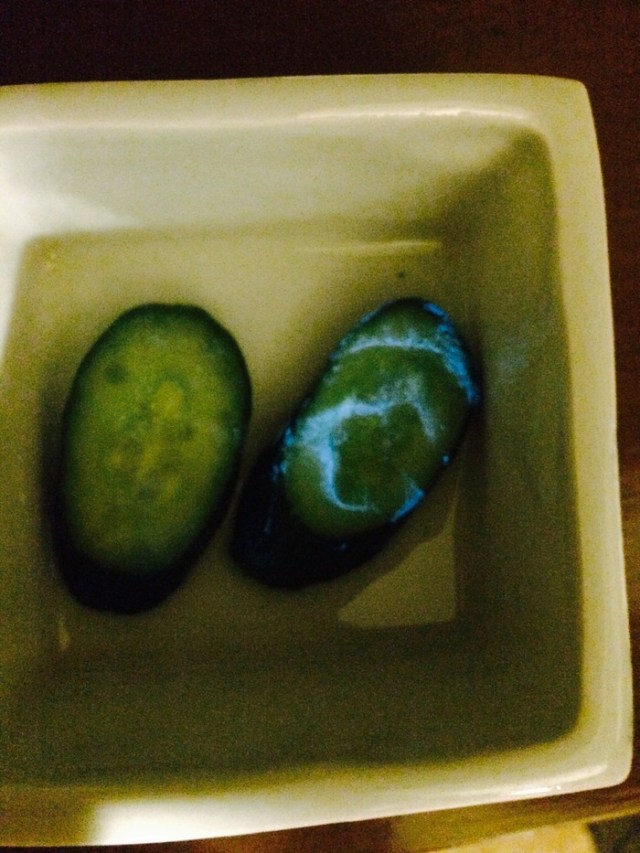

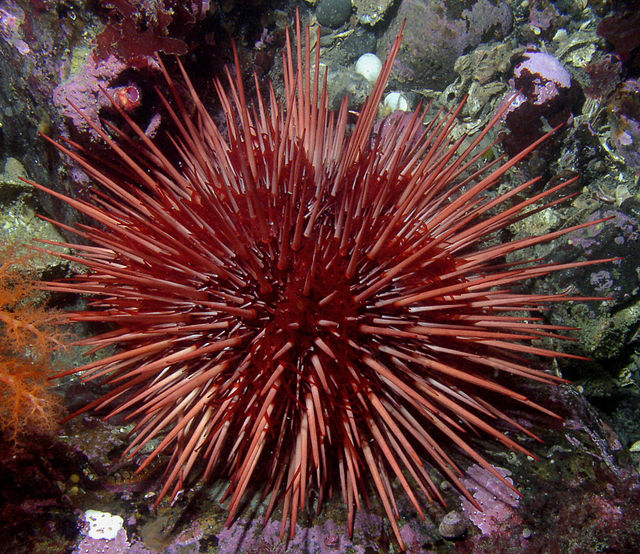
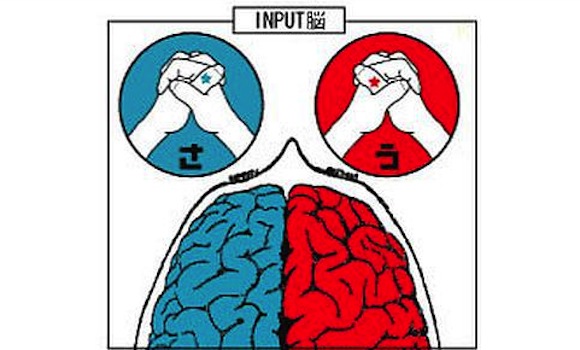

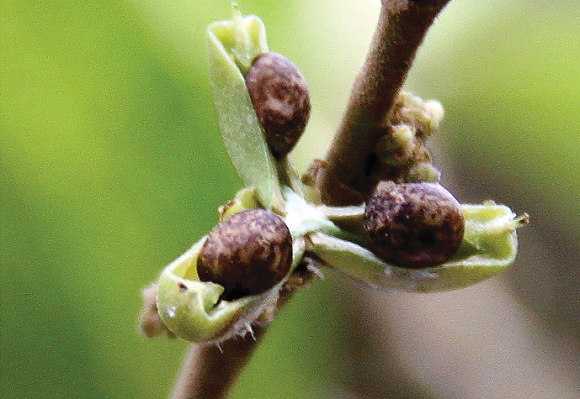





 McDonald’s new Happy Meals offer up cute and practical Sanrio lifestyle goods
McDonald’s new Happy Meals offer up cute and practical Sanrio lifestyle goods All-you-can-drink Starbucks and amazing views part of Tokyo’s new 170 meter-high sky lounge
All-you-can-drink Starbucks and amazing views part of Tokyo’s new 170 meter-high sky lounge Studio Ghibli glasses cases let anime characters keep an eye on your spectacles
Studio Ghibli glasses cases let anime characters keep an eye on your spectacles Studio Ghibli releases new action figures featuring Nausicaä of the Valley of the Wind characters
Studio Ghibli releases new action figures featuring Nausicaä of the Valley of the Wind characters McDonald’s Japan releases a pancake pie for new retro kissaten coffeeshop series
McDonald’s Japan releases a pancake pie for new retro kissaten coffeeshop series Super Nintendo World expansion gets delayed for several months at Universal Studios Japan
Super Nintendo World expansion gets delayed for several months at Universal Studios Japan Daiso opens massive new 25,392-square foot Tokyo flagship store with its two sub-brands included
Daiso opens massive new 25,392-square foot Tokyo flagship store with its two sub-brands included Beautiful Sailor Moon manhole cover coasters being given out for free by Tokyo tourist center
Beautiful Sailor Moon manhole cover coasters being given out for free by Tokyo tourist center Enjoy Kyoto (Part 3) — The ultimate breakfast? Try $45 rice porridge at a 400-year-old restaurant
Enjoy Kyoto (Part 3) — The ultimate breakfast? Try $45 rice porridge at a 400-year-old restaurant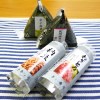 The madness ends now: How to conqueror impossible-to-open Japanese convenience store snacks
The madness ends now: How to conqueror impossible-to-open Japanese convenience store snacks More foreign tourists than ever before in history visited Japan last month
More foreign tourists than ever before in history visited Japan last month Disney princesses get official manga makeovers for Manga Princess Cafe opening in Tokyo
Disney princesses get official manga makeovers for Manga Princess Cafe opening in Tokyo Starbucks reopens at Shibuya Scramble Crossing with new look and design concept
Starbucks reopens at Shibuya Scramble Crossing with new look and design concept Beautiful new Final Fantasy T-shirt collection on the way from Uniqlo【Photos】
Beautiful new Final Fantasy T-shirt collection on the way from Uniqlo【Photos】 Is the new Shinkansen Train Desk ticket worth it?
Is the new Shinkansen Train Desk ticket worth it? Foreign English teachers in Japan pick their favorite Japanese-language phrases【Survey】
Foreign English teachers in Japan pick their favorite Japanese-language phrases【Survey】 Studio Ghibli releases Kiki’s Delivery Service chocolate cake pouches in Japan
Studio Ghibli releases Kiki’s Delivery Service chocolate cake pouches in Japan Japan’s bone-breaking and record-breaking roller coaster is permanently shutting down
Japan’s bone-breaking and record-breaking roller coaster is permanently shutting down New definition of “Japanese whiskey” goes into effect to prevent fakes from fooling overseas buyers
New definition of “Japanese whiskey” goes into effect to prevent fakes from fooling overseas buyers Our Japanese reporter visits Costco in the U.S., finds super American and very Japanese things
Our Japanese reporter visits Costco in the U.S., finds super American and very Japanese things Studio Ghibli unveils Mother’s Day gift set that captures the love in My Neighbour Totoro
Studio Ghibli unveils Mother’s Day gift set that captures the love in My Neighbour Totoro Domino’s Japan now sells…pizza ears?
Domino’s Japan now sells…pizza ears? New Japanese KitKat flavour stars Sanrio characters, including Hello Kitty
New Japanese KitKat flavour stars Sanrio characters, including Hello Kitty One of Tokyo’s most famous meeting-spot landmarks is closing for good
One of Tokyo’s most famous meeting-spot landmarks is closing for good Kyoto creates new for-tourist buses to address overtourism with higher prices, faster rides
Kyoto creates new for-tourist buses to address overtourism with higher prices, faster rides Sales of Japan’s most convenient train ticket/shopping payment cards suspended indefinitely
Sales of Japan’s most convenient train ticket/shopping payment cards suspended indefinitely Sold-out Studio Ghibli desktop humidifiers are back so Totoro can help you through the dry season
Sold-out Studio Ghibli desktop humidifiers are back so Totoro can help you through the dry season Japanese government to make first change to romanization spelling rules since the 1950s
Japanese government to make first change to romanization spelling rules since the 1950s Ghibli founders Toshio Suzuki and Hayao Miyazaki contribute to Japanese whisky Totoro label design
Ghibli founders Toshio Suzuki and Hayao Miyazaki contribute to Japanese whisky Totoro label design Doraemon found buried at sea as scene from 1993 anime becomes real life【Photos】
Doraemon found buried at sea as scene from 1993 anime becomes real life【Photos】 Tokyo’s most famous Starbucks is closed
Tokyo’s most famous Starbucks is closed One Piece characters’ nationalities revealed, but fans have mixed opinions
One Piece characters’ nationalities revealed, but fans have mixed opinions We asked a Uniqlo employee what four things we should buy and their suggestions didn’t disappoint
We asked a Uniqlo employee what four things we should buy and their suggestions didn’t disappoint Princesses, fruits, and blacksmiths: Study reveals the 30 most unusual family names in Japan
Princesses, fruits, and blacksmiths: Study reveals the 30 most unusual family names in Japan Super Nintendo World expansion gets delayed for several months at Universal Studios Japan
Super Nintendo World expansion gets delayed for several months at Universal Studios Japan Daiso opens massive new 25,392-square foot Tokyo flagship store with its two sub-brands included
Daiso opens massive new 25,392-square foot Tokyo flagship store with its two sub-brands included Beautiful Sailor Moon manhole cover coasters being given out for free by Tokyo tourist center
Beautiful Sailor Moon manhole cover coasters being given out for free by Tokyo tourist center Enjoy Kyoto (Part 3) — The ultimate breakfast? Try $45 rice porridge at a 400-year-old restaurant
Enjoy Kyoto (Part 3) — The ultimate breakfast? Try $45 rice porridge at a 400-year-old restaurant The madness ends now: How to conqueror impossible-to-open Japanese convenience store snacks
The madness ends now: How to conqueror impossible-to-open Japanese convenience store snacks Completely unmanned 24-hours clothing store found in Tokyo
Completely unmanned 24-hours clothing store found in Tokyo Gacha machine backpack is Japan’s hottest new fashion statement
Gacha machine backpack is Japan’s hottest new fashion statement Let’s make some French cuisine using two bucks worth of junk food from the convenience store!
Let’s make some French cuisine using two bucks worth of junk food from the convenience store! Celebrate National Cucumber Day by learning about the cucumber-loving yokai, the kappa
Celebrate National Cucumber Day by learning about the cucumber-loving yokai, the kappa How to use Japan’s new self-checkout supermarket carts
How to use Japan’s new self-checkout supermarket carts North Japan prefecture creates guide to help new foreign workers understand local language quirks
North Japan prefecture creates guide to help new foreign workers understand local language quirks Is Japan’s new Asahi Super Dry beer better or worse than the original formula?
Is Japan’s new Asahi Super Dry beer better or worse than the original formula?